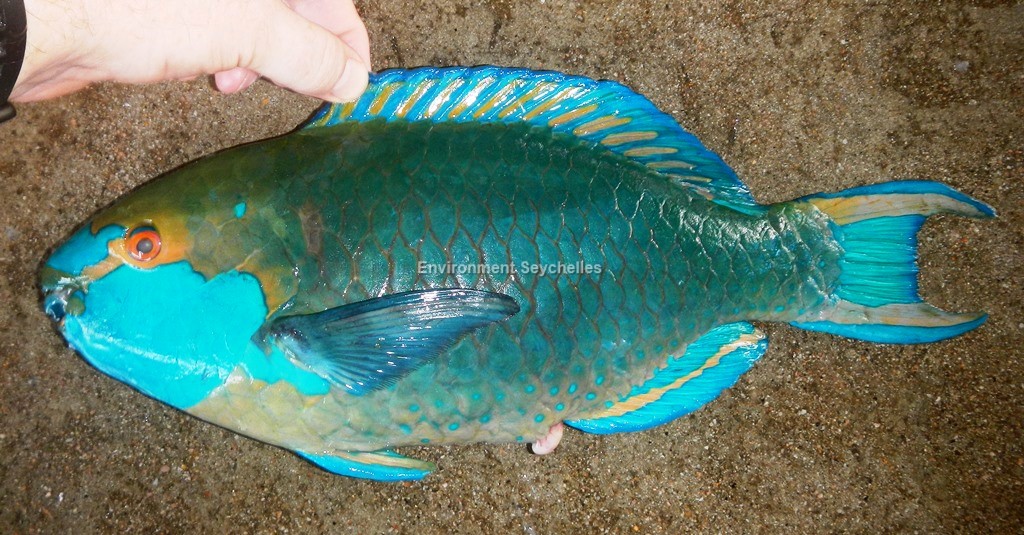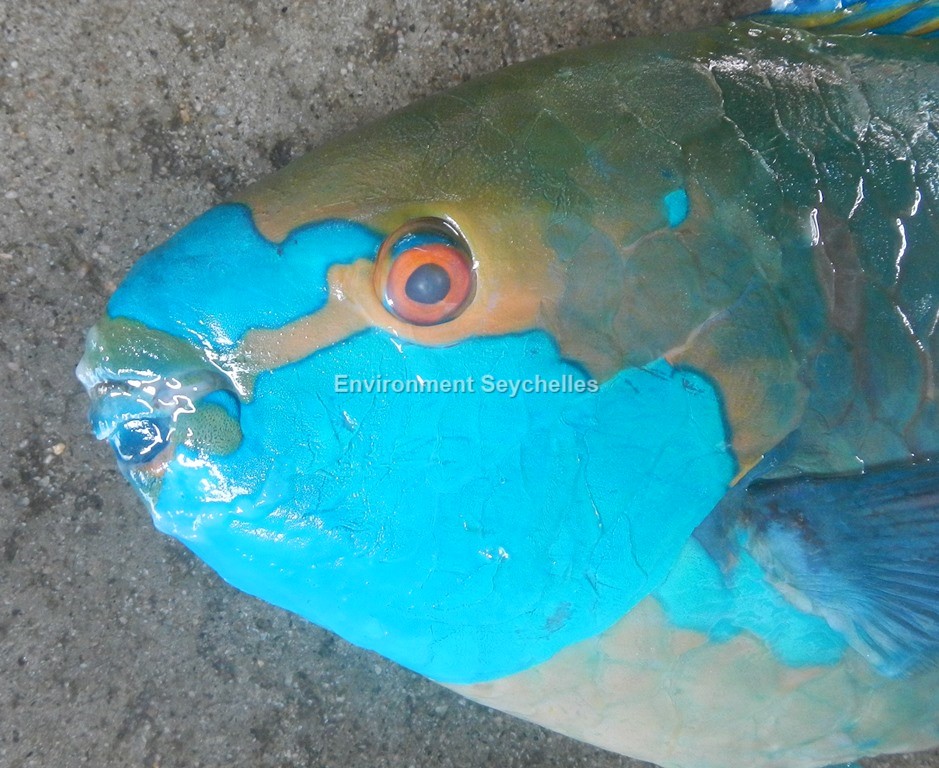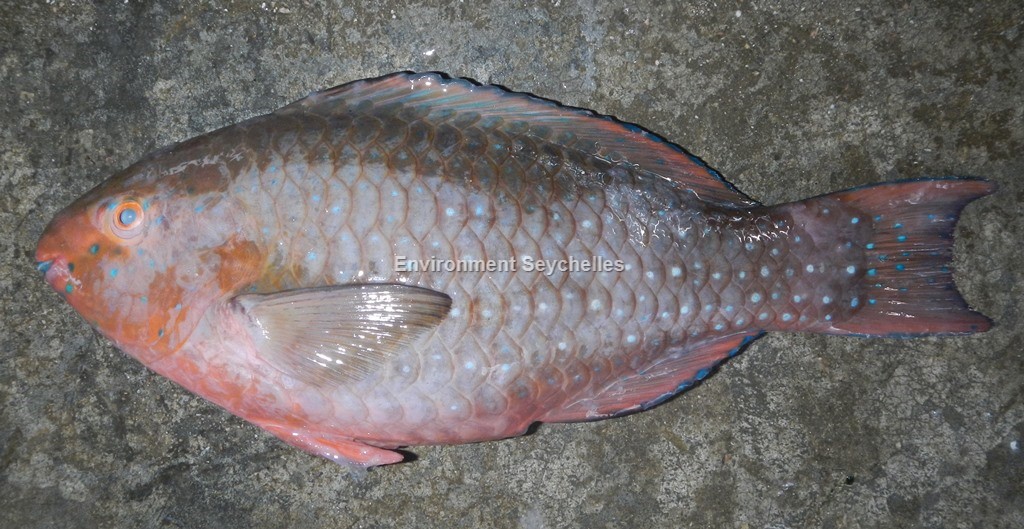Description:
Dorsal spines: 9; Dorsal rays: 10; Anal spines: 3; Anal rays: 9.
Medium to large-sized, full-bodied parrotifsh. 3 scale rows on cheek, with 1-3 scales in ventral row. Lips cover half to all of dental plates. Dental
plates green in both phases. Terminal phase with 0-2 canines posteriorly on side of upper plate, none on lower. Caudal fin slightly emarginate in small
initial phase fish to deeply concave in large terminal phase individuals.
Initial phase: reddish brown to brown becoming paler posteriorly on caudal peduncle with numerous whitish spots of an equal size (many scales with two
or three which may vary in intensity). Head brownish red with a few scattered dark green dots and a narrow bridal like dark green band passing from chin
almost to orbit. Median and pelvic fins dull orange, the margins of the dorsal and anal fins and upper and lower edges of caudal fin bluish grey; caudal
fin with some blue green spots centrally and basally.
Terminal phase: body dark greenish, the edges of the scales dull orange: entire cheek and operculum below level of lower edge of eye bright blue green,
head above cheek and broad region around mouth abruptly orange; a blue green band from front of orbit to front of snout separated from blue green of
cheek by a band of orange from orbit to corner of mouth. Dorsal fin blue with vertical streaks of orange on membranes. Anal fin blue with a narrow band
of orange. Caudal fin pale blue green with blue upper and lower margins and a broad submarginal orange band in each lobe. Pectoral fins with dark brown
rays, paler distally the leading-edge blue. Pelvic fins blue green with a blue leading-edge an orange streak on first ray.
Size:
Maturity: Lm unknown. Range unknown. Max Length: 70 cm TL.
Habitat and Ecology:
Associated with the outer slopes of coral reefs but will enter shallow water in protected areas such as lagoons (depth 1-25 m, usually 1-15 m). Often in
large schools. Grazes on benthic algae. Oviparous, distinct pairing during breeding.
Fishery Status:
This species is not protected or subject to fishery regulations. It is caught in the fish trap fishery, but is a very rare component of the catch. Unlike
the closely related S. falcipinnis which is a common component of the trap catch.
Lieske, E. & Myers, R. (2002) recorded the species present in central Seychelles and Nevill, J. recorded a Terminal phase specimen in the artisanal catch
in 2018 (photo above).
Notes:
S. falcipinnis closely resembles S. prasiognathos in the initial phase, but the terminal phase displays a different colour pattern.
References:
Allen, G. 2012. Scarus prasiognathos. The IUCN Red List 2012: http://dx.doi.org/10.2305/IUCN.UK.2012.RLTS.T154676A17898392.en. (24/03/19).
Froese, R. & D. Pauly. (Eds. 2019). FishBase. https://www.fishbase.se/summary/4971 (24/03/19).
Lieske, E. & Myers, R. (2002). Coral Reef Fishes. Indo-Pacific and Caribbean. Revised edition. Princeton University Press. ISBN 0-691-08995-7
Nevill, J.E.G. (2019). Artisanal Fishery catch monitoring database.
UNFAO (1983). FAO Identification Sheets. Family: Scaridae. Fishing Area 51 (W. Indian ocean)
Citation:
Nevill, J.E.G. (2019). Scarus prasiognathos, Singapore parrotfish. Seychelles Seatizens. www.seatizens.sc. https://seatizens.sc/species/scarus-prasiognathos-valenciennes-1840/ (edited 19/08/22).



